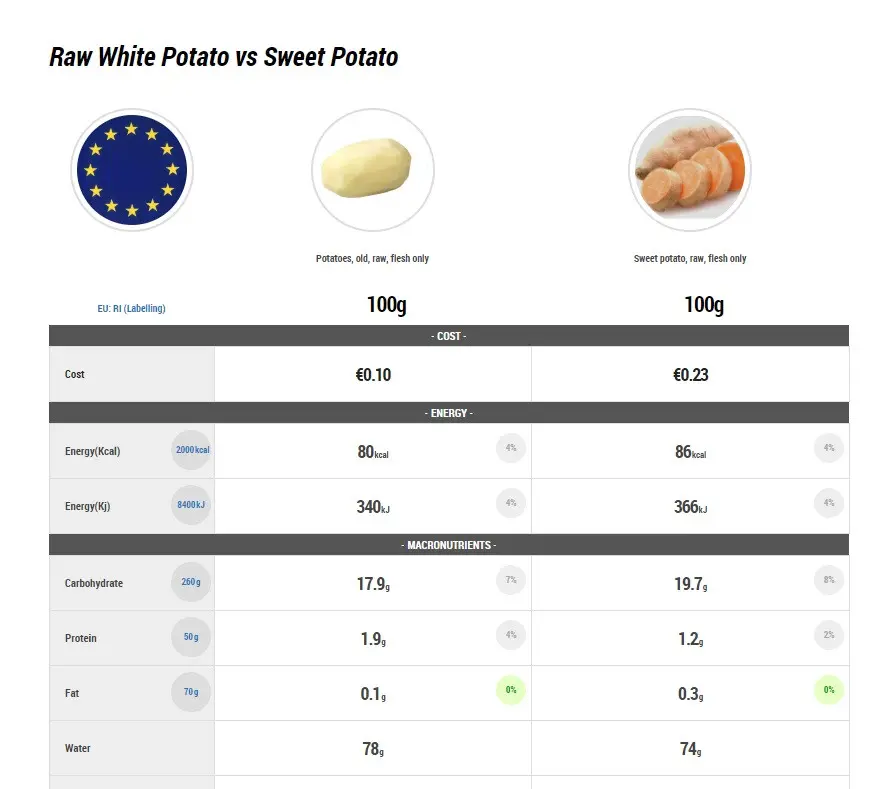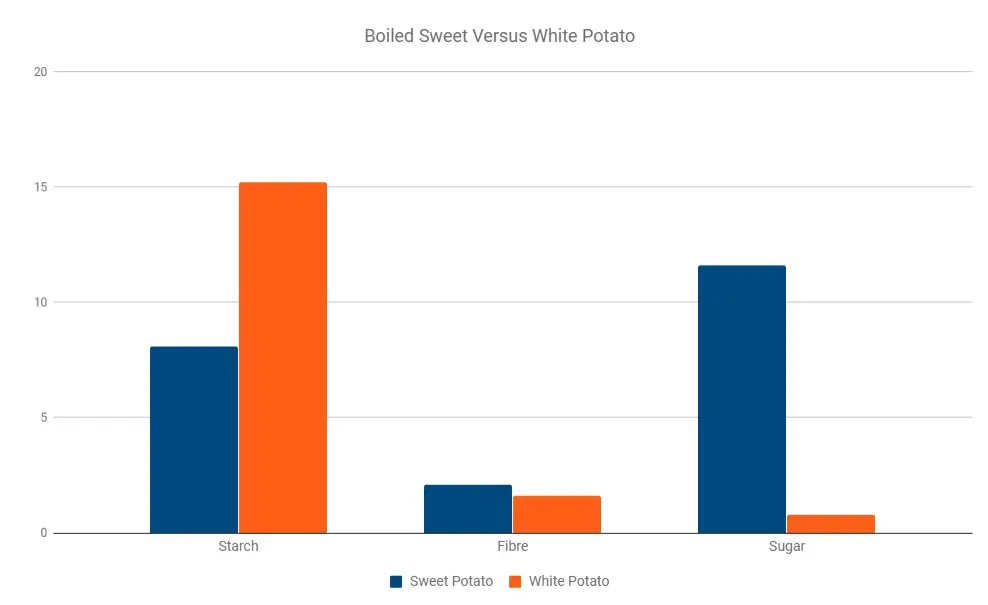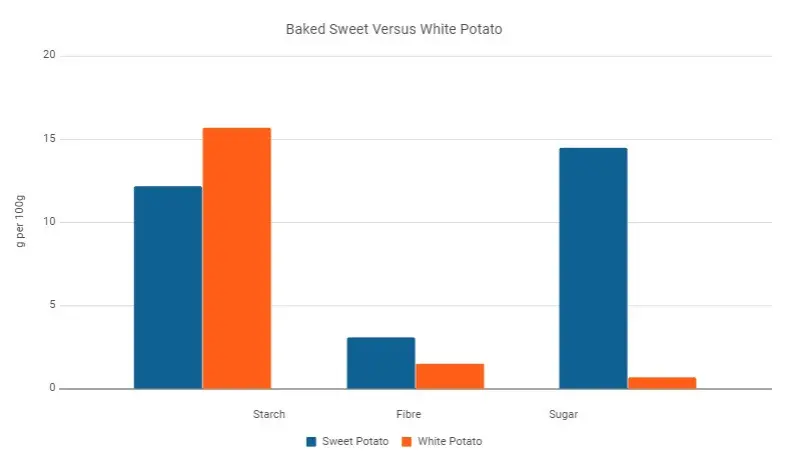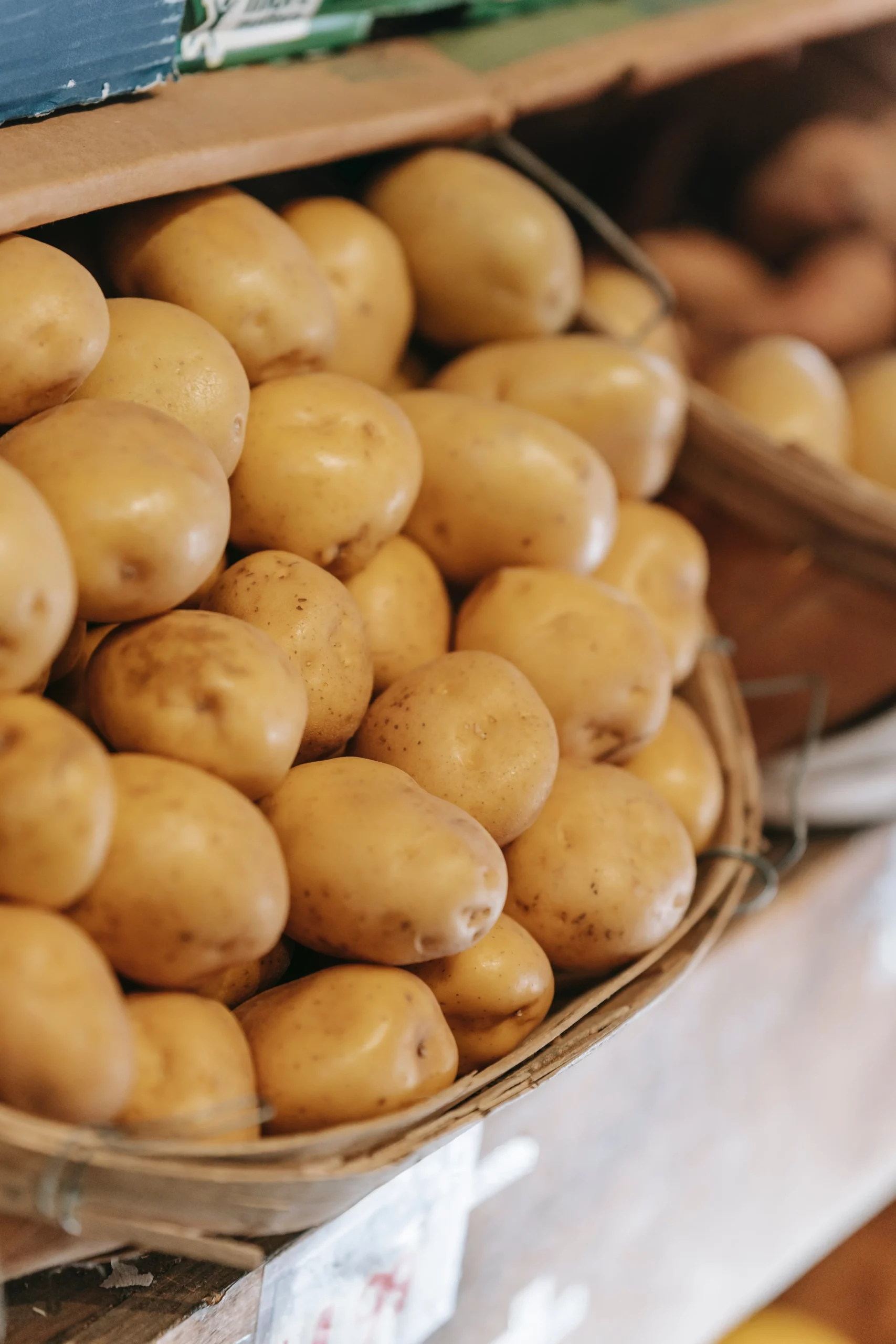Sweet potatoes are soft, starchy root vegetables. They can be consumed alone or as part of both savoury and sweet dishes. Over the past few years, the popularity of sweet potato has been on the rise. Whether you’re eating out in a restaurant, in the supermarket or flicking through a cookery book, there is no escaping them.
The sweet potato has been hailed as a ‘hero’ among the health and fitness communities, especially when compared to the regular white potato. But how do they actually when it comes to nutrition? We’ve analysed both sweet and regular potatoes for their macro and micronutrient content using the food comparison tool in Nutritics and the results offer some food for thought!*

Sweet potato carbs: uncooked
Compared to regular potatoes, sweet potatoes have 19.7g of carbs per 100g and potatoes have 17.9g of carbs per 100g. Do potatoes have protein? Yes, sweet potatoes have 1.2g of protein and 0.3g of fat per 100g, compared to 1.9g of protein and 0.1g of fat found in regular potatoes. The number of calories in sweet potatoes is also very similar, with 86kcal per 100g compared to the 80kcal per 100g found in regular white potatoes.
Looking at the uncooked versions of these two foods, there aren’t too many differences in terms of energy, carbohydrates, fat or protein. But who cares? They’re raw! In order to compare like with like, we looked at how these root vegetables compare when they are boiled and baked.
Boiling both sweet potatoes and regular potatoes, peeled, in unsalted water highlights some interesting nutritional differences. Sweet potatoes contain more calories, carbohydrates and fat than regular boiled potato, but the regular potato had more protein.

Perhaps unsurprisingly, boiled sweet potatoes contain more than 14 times the amount of sugar of regular boiled potatoes (11.6g compared to 0.8g per 100g). The majority of the sugar in sweet potatoes is from sucrose, with glucose and fructose making up the minority (1).
Both sweet potatoes and potatoes contain similar amounts of fibre (2.1g and 1.6g in 100g of sweet and regular potatoes respectively), but boiled potatoes contain almost twice the amount of starch compared to boiled sweet potatoes (15.2g compared to 8.1g per 100g). In terms of micronutrients, boiled sweet potatoes come out on top in terms of vitamin C, magnesium, calcium, iron and phosphorus while the regular potato wins when it comes to potassium, Vitamin B1 and folic acid.
Next up, we compared a baked sweet potato with a baked white potato. As with boiling, calories, carbohydrate and fat were higher in the baked sweet potato per 100g, but protein was higher in the baked white potato (2.2 g vs 1.6g per 100g). Baked sweet potatoes contained more than double the fibre of the regular potato, with less starch but a lot more sugar.

Sweet potato benefits: micronutrient profile
Looking at the micronutrients, again sweet potatoes come out on top in 10 of 12 of the minerals we measured (baked sweet and regular potatoes have the same amount of selenium, if you’re wondering). In terms of vitamins, sweet potato won when it came to vitamin C and vitamin A, but the regular potato was higher in folic acid and vitamins B1 and B3.
Sweet potato vs potato: which is more healthy?
Having looked at the nutritional profiles of and both boiled and baked sweet and regular potatoes, it’s hard to pick an outright winner. Sweet potatoes may have claimed the micronutrient crown but the regular potato shouldn’t be discounted yet. Whether it’s boiled or baked, this pantry staple has less fat and less sugar compared to its sweeter cousin.
So does the sweet potato deserve its halo? We’re not convinced. Yes, it is packed with micronutrients, tastes great and is super versatile — but so is the regular potato.
Our advice? Enjoy both in moderation!*The data in Nutritics is predominantly from the Composition of Foods Integrated Database 7th edition (COFIDS), published by the UK Department of Health in 2015. This is the authoritative source of information for nutritional values in the UK and Ireland. The foods used in the above comparison are as follows:
- Sweet potato, raw, flesh only. Nutritics food ID GB15 – 65328. COFIDS ID 13-463 (Includes McCance & Widdowson 7th ed.) [2015]
- Potatoes, old, raw, flesh only. Nutritics food ID GB15 – 64914. COFIDS ID 13-489 (Includes McCance & Widdowson 7th ed.) [2015]
- Sweet potato, boiled in unsalted water, flesh only. Nutritics food ID GB15 – 65327. COFIDS ID 13-551 (Includes McCance & Widdowson 7th ed.) [2015]
- Potatoes, old, boiled in unsalted water, flesh only. Nutritics food ID GB15 – 64909. COFIDS ID 13-490 (Includes McCance & Widdowson 7th ed.) [2015]
- Sweet potato, baked. Nutritics food ID GB15 – 65326. COFIDS ID 13-363 (Includes McCance & Widdowson 7th ed.) [2015]
- Potatoes, old, baked, flesh only. Nutritics food ID GB15 – 64906. COFIDS ID 13-620 (Includes McCance & Widdowson 7th ed.) [2015]
Reference1. Kohyama K, Nishinari K. Effect of soluble sugars on gelatinization and retrogradation of sweet potato starch. J Agric Food Chem. 1991 Aug;39(8):1406–10.
